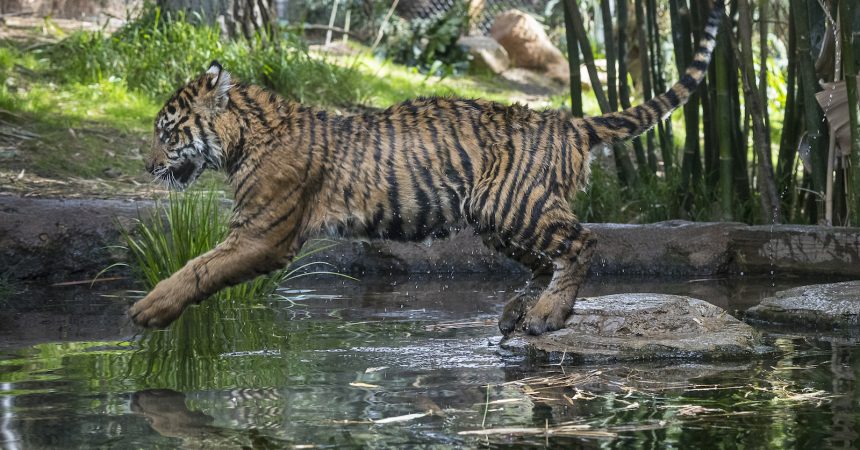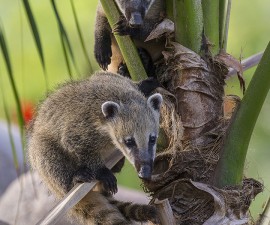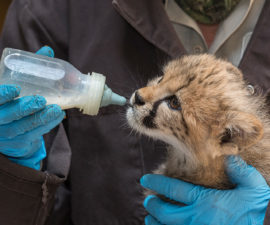Guests at the San Diego Zoo Safari Park’s Tull Family Tiger Trail were able to watch rambunctious tiger cubs Moka and Rakan this morning (Tuesday, Jan. 30, 2018) as they explored—for the very first time—a much larger outdoor area. Until now, the cubs have been spending their days outdoors in Exhibit A, also known as the maternity area, with smaller climbing structures and a small, shallow wading pool.
Both cubs are now about 6 months old and weigh around 70 pounds, so keepers felt it was time for them to learn new skills and face new challenges. They introduced the cubs to the larger Tiger Trail Exhibit B. The outdoor area offers the cubs larger climbing structures, bigger rocks and a rock wall structure to explore. This area also includes a larger, deeper pool, where the cubs can practice their swimming—a necessary skill for tigers to learn. Unlike most big cats, tigers are adept swimmers.
“We always enjoy watching the tiger cubs explore new surroundings and learn from their experiences,” said Lori Hieber, lead mammal keeper, San Diego Zoo Safari Park. “This exhibit space will give them the opportunity to navigate some new challenges together.”
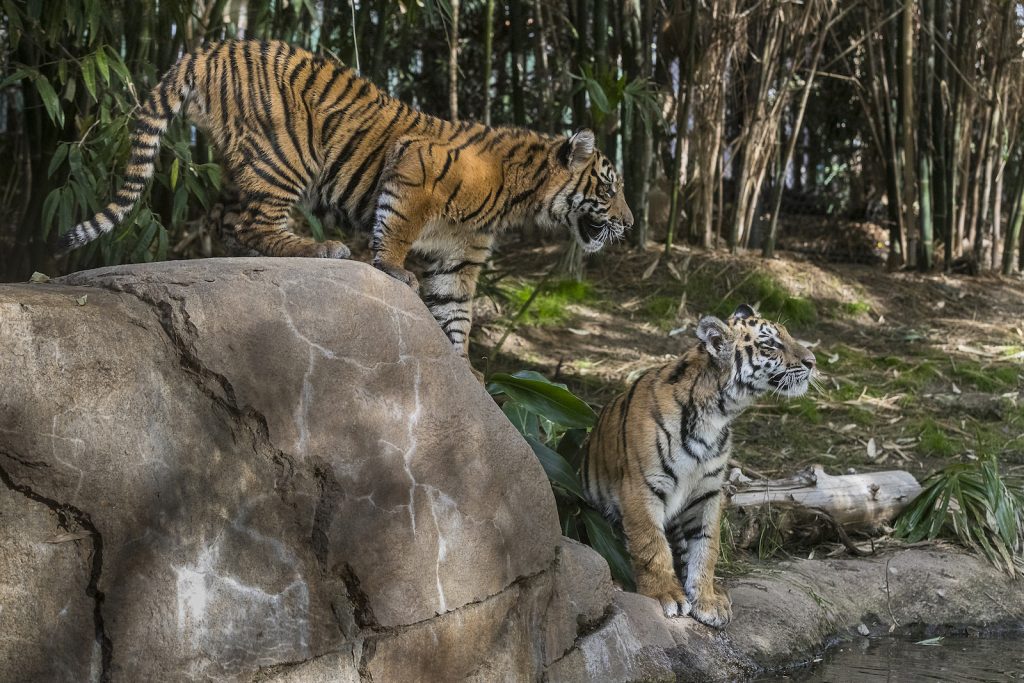
Eleven tigers currently reside at Tiger Trail and share the outdoor areas on different days of the week. Guests at the Safari Park will have an opportunity to see the playful cubs on the days they are outdoors in Exhibit B, from 9 a.m. until late afternoon.
Moka, a Bengal tiger cub, was brought to the San Diego Zoo Safari Park Aug. 23, 2017, after being confiscated by U.S. Customs and Border Protection officers during a vehicle inspection at the U.S./Mexico port of entry near San Diego. The cub remains under the jurisdiction of the U.S. Fish and Wildlife Service. As part of the organization’s broader efforts to lead the fight against extinction, San Diego Zoo Global is committed to reducing wildlife trafficking and the demand for illegal wildlife products.
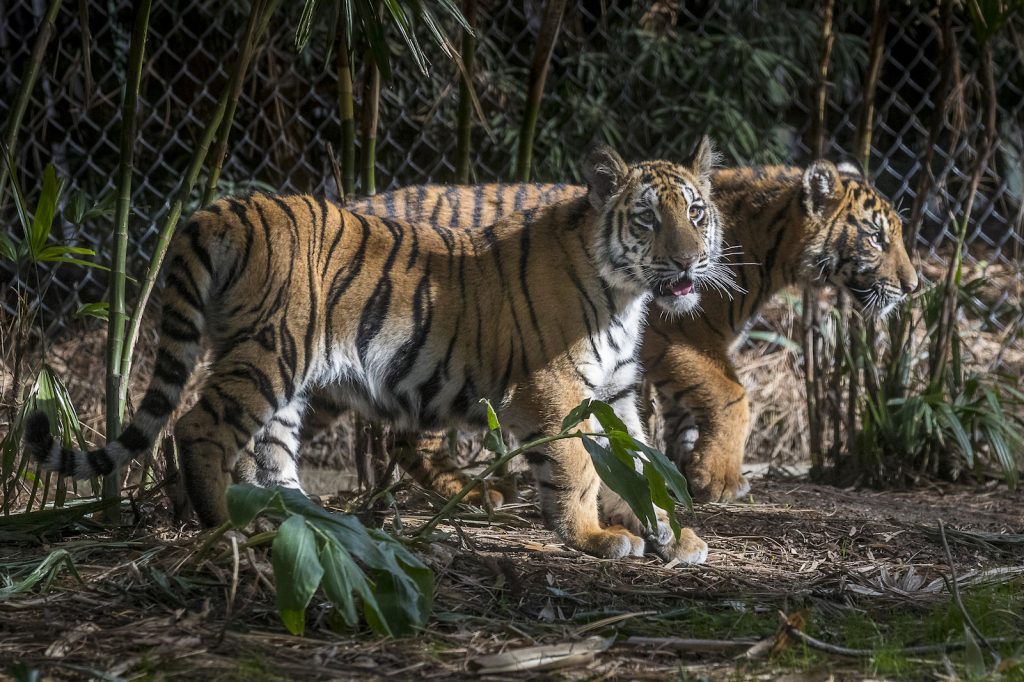
Rakan, a Sumatran tiger cub, was born at the Smithsonian’s National Zoo, but his mother was unable to care for him properly. Both the San Diego Zoo Safari Park and the National Zoo are members of the Association of Zoos and Aquariums (AZA), and in a collaborative effort, the animal care teams determined the best solution for the well-being of the National Zoo cub was to transfer him to the Safari Park, so he would have a playmate and grow up with another tiger. This offers both cubs opportunities for social interaction.
Like all tigers, the critically endangered Sumatran tiger and endangered Bengal tiger subspecies face many challenges in the wild, from loss of habitat to conflicts with humans, but the biggest threat continues to be poaching. Tigers are killed by poachers who illegally sell tiger body parts, mostly for folk remedies. People can help protect wild tigers by avoiding products made with non-sustainable palm oil, an industry that harms tiger habitat; and by refusing to purchase items made from endangered wildlife.

